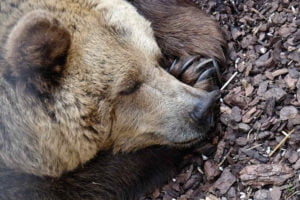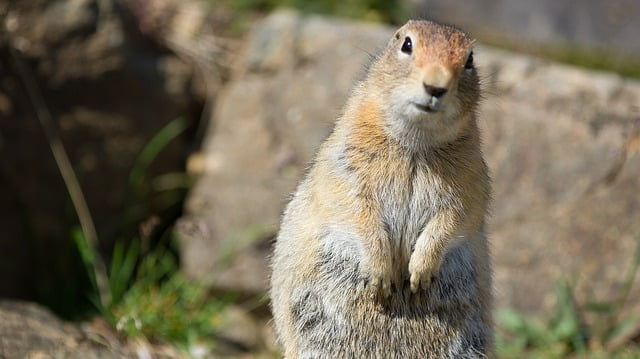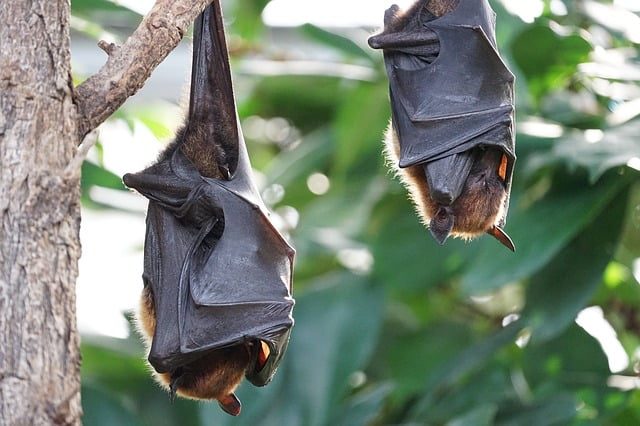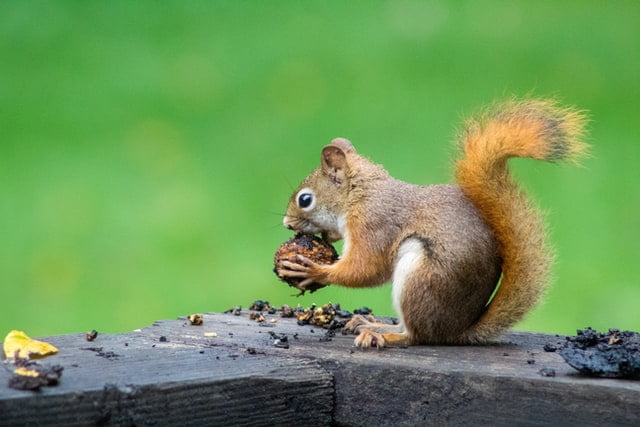There’s a strange phenomenon called hibernation where animals basically sleep out the entire season of winter.
Find out why animals choose do so, and which members of the animal kingdom are fond of this habit.
What animals hibernate?
Animals that cannot cope with the energy constraints of the winter season hibernate. For these animals, searching for food or simply maintaining a normal body condition in the chills of winter becomes energetically too costly or practically impossible. As a viable option, they resort into a state of dormancy (or inactivity) which significantly repress their energy demands throughout winter.
The animals that have been discovered to hibernate include:
- Black and Brown bears
- Northern Bats
- Badger
- Dwarf Lemurs
The problems and the solution
Hibernation is a survival strategy adopted by some species of mammals and birds to cope with the inhospitable climate of the winter season. True hibernating animals generally cannot sustain a normal balance between their body’s heat production and loss during the winter season.
Most of them have a relatively large surface area to volume ratio (which increases their potential for heat loss), and cannot carry out any effective thermal insulation whether of internal or external means to prevent this loss.
Note: A larger surface area to volume ratio usually implies that the animal is small bodied whereas a smaller surface area to volume ratio implies that the animal has a larger body.
To compound to such problem of energy loss, almost all hibernating animals are faced with a shortage of food resources during this frigid period. This shortage means a drop in their energy supply which results in their inability to supplement for the net heat loss and maintain a normal body condition prerequisite for survival.
At times, even with a reliable food supply, ambient temperatures may drop so low that simply going out to search for food or maintaining a basal metabolic rate and normal core body temperature becomes everything next to impossible.
To combat this life threatening situation, they adopt an energy-efficient startegy that suspends their bodily activities for most of winter — effectively suppressing their energy demands and forcing them to efficiently manage the little energy resource they have.
Hibernation Facts:
During hibernation, animals often (but not always) record a huge plunge in their internal body temperatures and basal metabolic rate. Breathing also reduces to a great extent and may even stop in some cases. The animals remain in a state of ‘suspended animation’, only waking up after every few days, weeks or months (depending on the species), to warm up their bodies and return back to dormancy.
The mammals and bird that hibernate
According to the mainstream scientific media, animal hibernation is only exclusive to the living clades of mammals and one species of birds (the common poorwill) who is known to enter into a state of hibernation normally characterized by long periods of dormancy (during winter) with rhythmic arousal on a very frequent schedule.
The reason is because only ectotherms (a group of animals whose majority comprises of mammals) are able to actively down regulate their basal metabolic rates and internal body temperatures. Ectotherms on the other hand, the likes of reptiles, arachnids and amphibians can also experience reduced basal metabolic rates and internal body temperatures, but not as a result of active depression on their own end. They have no means to suppress physiological activities like that at will.
The reduction is rather an obligatory one due to external factors such as frigid conditions of their ambient temperatures or low oxygen availablity in their environments.
The term hibernation is thus often avoided for anything outside the mammalian and aves class, and the much more broader terms of dormancy and torpor or the distinct term of brumation are used for ectotherms them instead.
Note: Some scientist choose not make any distinctions regarding winter dormancy in both ectotherms and endotherms, and as such, they refer to any animal that experiences a reduced basal metabolic rate and internal body temperature during the winter season as ‘hibernator’. For the sake of this article however, we’ll be sticking with the strict wikipedia definition of hibernation as an endothermic phenomenon, and thus only designate hibernation to the mammals and one species of birds that are known to do so.
Quick list of animals that hibernate
Mammals that have been observed to hibernate include:
- Bears
- Badgers
- Arctic ground squirrels
- Bats
- Tenrecs
- Hamsters
- Chipmunks
- Badgers
- Dwarf lemurs
- American opossum
- Possum
- Hedgehogs
- Spiny anteaters
Bird species that have been observed to hibernate include:
- The common poor will
Below are some of the coolest hibernators of the animal kingdom and how they observe their winter timeout.
The prominent hibernators of the animal kingdom
1) Bear
Not all bears hibernate during the winter season, but for those that do, they observe it in a den — a cave, burrow, rock crevice, hollowed-out tree, culvert or shallow depression consisting of an entrance and a bedding chamber lined up with forest leaves, spruce bough and duff.
These dens can be nature made, one dug out and occupied the previous year by a bear or one dug out by the bear itself, and the construction is often insulation driven and in a conspicuous manner to provide excellent protection against predators looking out for ‘free meal’.

Entry into dens is influenced by severeness of external conditions such as snow and ice and duration or exit from dens often depends on climatic conditions of the denning area, for example, in areas where the ambient temperatures warm up relatively quickly, bears hibernate for relatively shorter periods as compared to areas where warmth is delayed until mid spring.
Overall, denning in bears vary from a few days to several months across species and often begins around the browny period of late October to early November and ends in a maximum period of mid may.
Denning is generally characterized by lack of eating, drinking, urinating and defecating, but animals may occasionally arouse to change their resting positions or stretch their legs.
Prior to denning, bears receive some external cues (i.e. change in ambient temperature, daylength and diminishing food supply) that alerts them of the inert season ahead. This can occur months before the onset of winter. In response, a compound called HIT (Hibernation Induction Trigger) is released into their systems and sent to various organs to alert them to start preparing for hibernation.
While this signal is busy alerting organs to begin shutting down, bears begin by preparation by searching for dens or excavating them and consuming large amounts of food in order to put up weight, this is known as being hyperphagic. Most of this weight is stored up as fat deposits under their skins, and is used primarily as the main energy supply during their dormant period.
Once they begin hibernating, their body temperature drops to about 88°F, which is 12 degrees less their normal body temperature around 101°F.
This contrasts greatly with other seasonal and hibernators like marmots and ground squirrels (also known by a decent population of the scientific community as true hibernators) whose body temperatures may drop below 40°F.
This slight drop in body temperature (which also translates into a small drop in metabolic rate) enables bears to easily wake up from their slumbers in response to external threats such as floods or predators, but it’s also the reason why may scientist debate their “ability to truly hibernate”.
In addition to this slight fall in body temperature, bears also record about 50% decrease in their metabolic rate and a consequent reduction in their engery use by up to 75%.
Their heat beats also plunges from 40 to 50 beats per minute to about 8 to 19 beats per minutes. They develop a butt plug called tappen, made up of tough fibrous materials which functions to keep waste materials in and other foreign materials out.
All these physiological changes significantly repress their energy demands and enables them to effectively live on their fat stores until winter is over. Post hibernation, all bears can loose upto 15 to 27% of their pre-hibernation weight by using up their fat stores. Pregnant bears often loose the most weight due to sucking and nursing of young.
Fun fact
Female bears can observe winter hibernation while gestating. They use their fat stores to generate energy and offer warmth for their embryos. They can given birth while hibernation and even nurture while in this dormant state.
Read the more extensive article about hibernation in bears by clicking the link below.
2. Arctic ground squirrels
In contrast to bears, hibernating squirrels record a massive decrease in their body temperatures and can get as cold as ice, literally.
Their body temperature drops below 40°F and most of their bodily functions suspend, causing their basal metabolic rate to plummet by 90 percent.

This enables them to survive on very little calories throughout winter. They are actually called true hibernators alongside other minute mammals because of this massive plunge in physiological functions.
Squirrels just like bears save up energy reserves to sustain their hibernation conditions which includes the periodic spells of arousals which is the most energetically costly.
They become hyperphagic and consume large amounts of food (by their own terms) until they double up their body sizes. Some may even collect a sustainable food cache off their favorite nuts and fruits, in order to have something to munch on when they finally leave their hideouts from hibernation (before new vegetation sets in).
Squirrels hibernate in an energy-efficient burrow rooted deep into the underground soils at elevated levels. During hibernation, they periodically wake (as often as every two to three weeks) to stretch their bodies and then return back to dormancy.
This period arousal is energetically expensive and consumes more than half of the energy from their fat stores during hibernation. The reason why such arousal persists still remains a mystery even though as much as 20 different theories exist seeking to explain the seemingly unnecessary phenomenon.
3. Bats
Similar to bears, not all species of bats hibernate. For those that choose not to, they migrate to much warmer destinations upon sensing the onset of winter and continue their normal activities as they would during summer months in their modal habitats.

Hibernating bats choose optimally chilled but humid atmospheres for their dens. They are forced into these homes when insect activities have greatly diminished and fruits become deeply buried underneath snow or ice.
Accumulation of fat reserves in bats happens in a weird fashion. They ignore depositing adipose tissues in periods when food resources are plentiful (which corresponds to the period of early summer to mid summer) and being accumulation only when insect activities have started to dwindle and other resources are now much more difficult to find (around early to mid autumn or even as deep as late autumn).
To accumulate fat reserves in this difficult situation, bats migrate from their warmer roosting sites (of summer) to settle in a much more colder environment during autumn. The timing is by means of internal genetic clock and not based on physical observations on external factors as observed in a study conducted on 17 individual species of bats in 1999.
While in this new habitat, bats try their luck with forage at mid night and sleep their time out (or more correctly, enter into a state of torpor) in the day time (up 14 hours in some cases). The logic behind their migration and the newly developed habit in this brand new roosting site is to create a positive energy imbalance that forces extra fatty tissues to build up within them.
By migrating from a warmer to a much cooler place and entering into a state of torpor in the day time — characterized by temporary reduction in metabolic rates and internal body temperatures, bats are able to greatly reduce energy expenditure compared to when they choose to roost in their summer sites and actively forage all day long.
This energy conservation tactic, along with the little food they are able to find when they go out to forage at night, enables them to store up enough fat reserve before winter arrives.
When bats have garnered sufficient adipose tissues that can last them throughout winter, they migrate to their hibernation sites which are mostly underground spaces such as caves, mines, tunnels, cellars and bunkers but can also be the attics of your home apartment.
Bats migrate and instantly begin hibernation around early November or so. They repress their internal temperatures, metabolic rates and breathing rates nearly similar to the way and level arctic ground squirrels do it. They also occasionally arouse to move around and adjust their positions like the little squirrels do.
Bats emerge out of their dens when ambient conditions become much warmer and tolerates foraging and other biological activities like reproduction.
Read the full article on how bats hibernate by clicking on the link below:
More interesting articles
Cite this Article ” (APA Format)
Bunu. M. (2020, April 7). What animals hibernate?. Retrieved from http://emborawild.com/what-animals-hibernate/

